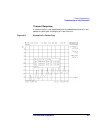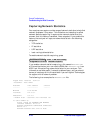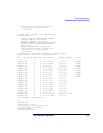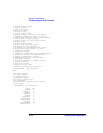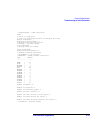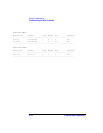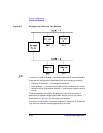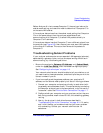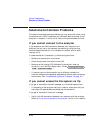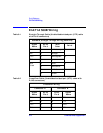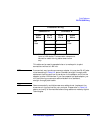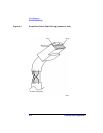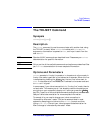
LAN Interface Supplement 8-17
General Troubleshooting
Subnets and Gateways
Before Analyzer A tries to access Computer C, the analyzer looks at its
subnet mask setting, and uses this mask to determine if Computer C is
on the same LAN subnet.
If the analyzer determines from the subnet mask setting that Computer
C is on the same subnet, then the analyzer establishes direct
communication with Computer C (it sends LAN packets directly to
Computer C's IP address).
If the analyzer determines that Computer C is on a different subnet from
the analyzer (see Figure 8-3), then the analyzer must send LAN packets
to the router's IP address. The router then forwards the packets to
Computer C.
Troubleshooting Subnet Problems
If your analyzer and computer are on separate LAN segments (subnets),
separated by a gateway router, and you are experiencing difficulties in
communicating, try the following solutions:
• Be sure the analyzer's and
under the menu have been configured properly.
See “Configuring the Analyzer” on page 1-8.
Your network administrator should be able to tell you whether or not
you need to enter these parameters, and should provide you with the
correct numbers if you do.
• If you have configured the gateway address, your analyzer's IP
address, and the subnet mask properly, but are still having problems
1. Connect your computer and analyzer directly to each other (with
no gateway routers between them). This can be done by connecting
the computer and analyzer to the same subnet, or by the use of a
"cross-over" cable. See “Point-to-Point Connections” on page 1-7.
2. Configure both your computer and your analyzer so that they are
both using a subnet mask value of 0.0.0.0, thus disabling gateway
routing.
3. Now try the ping test in both directions as described in
“Troubleshooting the Initial Connection” on page 8-3. If it works,
and it didn't before, you've determined that you have a problem
with subnetting. Contact your network administrator for
assistance.
Gateway IP Address
Subnet Mask
LAN Port Setup



